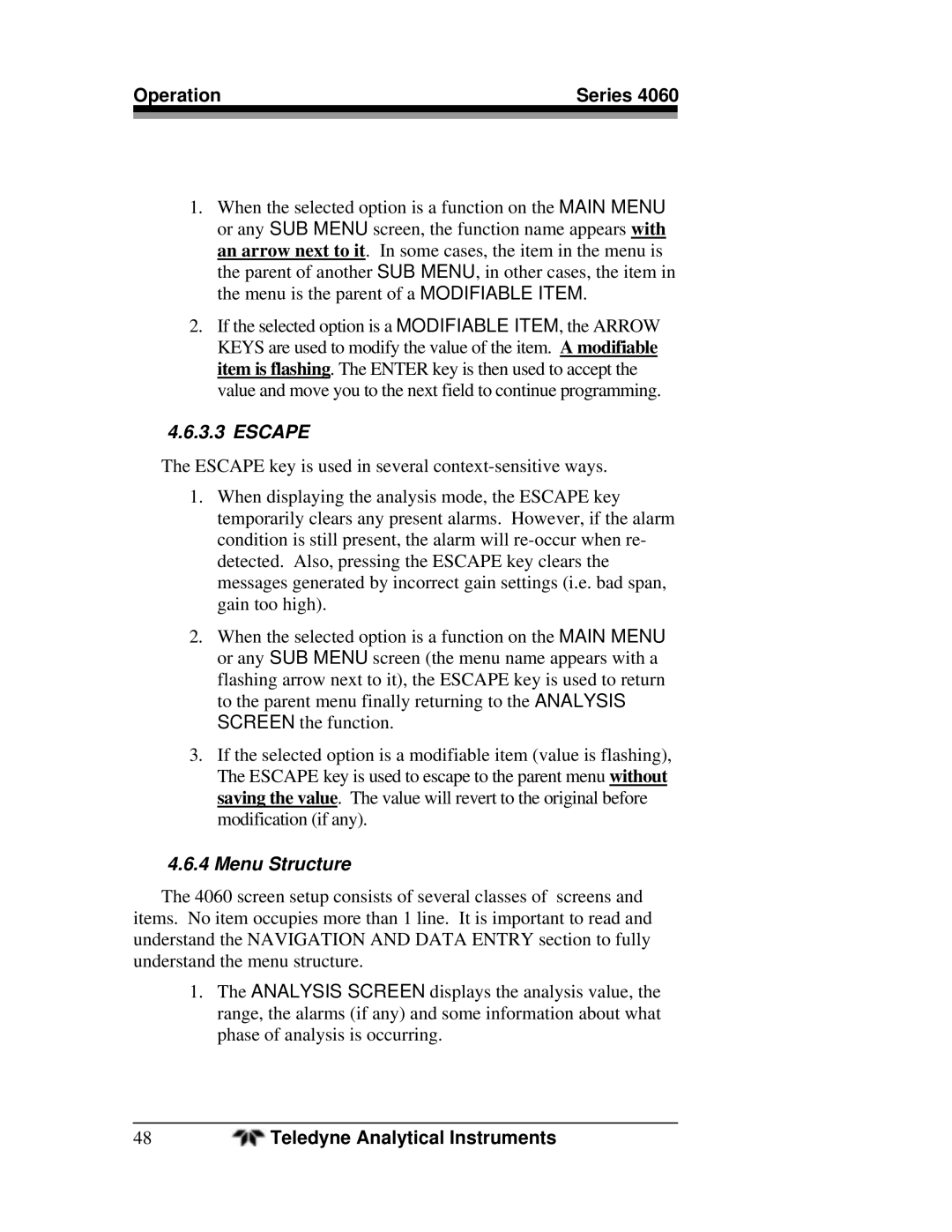Operation | Series 4060 |
|
|
|
|
1.When the selected option is a function on the MAIN MENU or any SUB MENU screen, the function name appears with an arrow next to it. In some cases, the item in the menu is the parent of another SUB MENU, in other cases, the item in the menu is the parent of a MODIFIABLE ITEM.
2.If the selected option is a MODIFIABLE ITEM, the ARROW KEYS are used to modify the value of the item. A modifiable item is flashing. The ENTER key is then used to accept the value and move you to the next field to continue programming.
4.6.3.3 ESCAPE
The ESCAPE key is used in several
1.When displaying the analysis mode, the ESCAPE key temporarily clears any present alarms. However, if the alarm condition is still present, the alarm will
2.When the selected option is a function on the MAIN MENU or any SUB MENU screen (the menu name appears with a flashing arrow next to it), the ESCAPE key is used to return to the parent menu finally returning to the ANALYSIS SCREEN the function.
3.If the selected option is a modifiable item (value is flashing), The ESCAPE key is used to escape to the parent menu without saving the value. The value will revert to the original before modification (if any).
4.6.4 Menu Structure
The 4060 screen setup consists of several classes of screens and items. No item occupies more than 1 line. It is important to read and understand the NAVIGATION AND DATA ENTRY section to fully understand the menu structure.
1.The ANALYSIS SCREEN displays the analysis value, the range, the alarms (if any) and some information about what phase of analysis is occurring.
48 | Teledyne Analytical Instruments |
